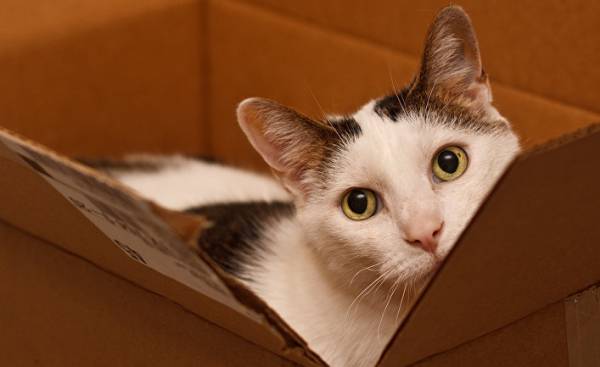
The last time Twitter was flooded with people with a fondness for cats that like against the will settle on a square piece of the floor bounded with tape. These felines did not seem able to resist the call of #CatSquare.
This hobby social networks have become a kind of development question I heard again and again, when he participated in a TV program “The lovely animals of America” (America’s Cutest Pets) on the TV channel Animal Planet. I repeatedly asked to watch a video in which cat climbed into cardboard boxes, suitcases, shell, plastic boxes, cabinets and even vases with wide necks.
“That’s nice… But why is she doing this, what do you think?” — always asked me. As if each of these stories with insight and protiskivayas has a very special explanation.
Box 1, #CatSquare 0 pic.twitter.com/YnCj6Do50d
— LilAeris (@lilaeris_9) 27 APR 2017
But it’s not. It’s just one of the laws of life — cats love to climb into small spaces where they feel safer and more secure. Instead of sitting in the middle of the hustle and bustle and all sorts of dangers inherent in large spaces, cats prefer to squeeze into small spaces with more clearly defined boundaries.
When they were young, they warmly pressed against my mom and my brothers and sisters, feeling the warmth and soothing touch. Imagine that it’s something like a changing Mat for baby. We believe that close contact with the edges of the box releases endorphins — natural substances, in action similar to morphine, they cause a feeling of pleasure and reduces stress.
Along with temple Grandin (Temple Grandin), I studied the calming effect of “lateral pressure”. We found that the drug “Naltrexone”, which counteracts the endorphins also neutralizes soporific effect on pigs has a mild pressure. Who hug?
And also remember that cats make their nests — small, confined spaces where a mother cat gives birth to her kittens and gives them shelter. Note that this behavior is not tied to any particular gender, and not depend on sterilization. The predilection for small spaces there are in the repertoire of every cat and generally works perfectly (except with the carrier, of course, which are associated with negative associations like car travel or visit to the vet).
There is a variant of this theme — when the box is so small that it does not provide all the benefits that it could.
Or she may not have walls, representing only a hint of the box — for example, the rectangle on the floor, outlined with duct tape. This pseudocore not as good as real, but at least gives an idea of what could be if she suddenly became a real box in which to Nestle.
Looks like the #catsquare nabbed one of them… #dailyDixon pic.twitter.com/N5BZDV4Ttw
— Christina Mayer (@clynnmayer) 27 APR 2017
Even this virtual box can give a false sense of security and psychosomatic comfort.
“The question cat-in-a-box” became the subject of experiments by Dutch scientists, which allowed the cats to use the box as a hiding place. According to the study, the cats with boxes quickly adapted to the new environment in comparison with the control group cats without boxes: scientists have concluded that cats with boxes are less stressed, as they have the cardboard hole where you can lay low.
Let this be a lesson to all cat lovers: cats need boxes and other vessels, as their habitat becomes more intense. The hole on the hill even better: located upstairs, they also provide better security as well as provide an opportunity to observe everything, so to speak, from the height of bird flight.
If not this box, the next in the ranking of the best places for a cat to be a square on the floor, despite the fact that it is a poor substitute for the real thing. In any case, whether a box from under the Shoe, a shopping bag or box on the floor, they will probably give the cat a sense of security, which is simply no open space.







